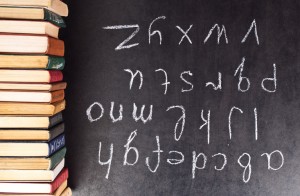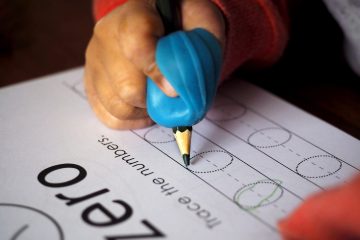 When my oldest child Kelsey was a toddler, she was a stickler for schedules. If we did something spontaneous or outside of our regular routine, she would tell me that things felt “topsy turvy.” I’m guessing that this is how some students and teachers are feeling about the latest trend to hit the education realm—the flipped classroom.
When my oldest child Kelsey was a toddler, she was a stickler for schedules. If we did something spontaneous or outside of our regular routine, she would tell me that things felt “topsy turvy.” I’m guessing that this is how some students and teachers are feeling about the latest trend to hit the education realm—the flipped classroom.
What Is the Flipped Classroom?
Using video recording technology and Internet connectivity, some teachers (and entire schools) are adopting a form of blended learning which allows students to listen to lectures at home from their computers or tablets and then complete assignments and participate in activities and discussions in class. In this “flipped model,” the theory is that students will no longer have to listen to boring lectures while struggling to take notes and retain information simultaneously, and they will no longer have to do assignments on their own at home without the teacher’s assistance. Instead, they will have the luxury of listening to lectures at their own pace, pausing and reviewing as necessary, and then completing their assignments in the classroom where they can ask for the teacher’s assistance. They will also have more time to collaborate with their peers on a project related to the lecture topic. View a Flipped Classroom Infographic here.
Pros and Cons of the Flipped Classroom
If this trend catches on, and it’s looking like it might, then only time will tell whether the model is an effective one. However, from the perspective of a teacher, a parent, and a former student myself, I can see both advantages and disadvantages to a flipped classroom.
Pros
- Recorded lectures. Oh, what I would have given for video lectures of my high school physics class! I could barely keep up with the teacher, despite how hard I tried, and as a result, was completely lost when it came time for me to complete my homework at night. I can definitely see the benefits of watching instruction on your own time and then completing the “homework” in class with a little assistance from the teacher when necessary.
- More classroom interaction. When I was teaching high school English, my curriculum was so jam-packed that I would often have to forego the fun classroom activity I had planned and just focus on relaying the important information. On these days, I felt more like a robot than a teacher, and I wondered how much my students had really learned as somewhat passive recipients of this information. I would have loved for my students to come into class having already received the information and ready to apply their knowledge.
Cons
- Homework is homework. One issue I have with the idea of a flipped classroom is that assigning videos for students to watch on their own time is still homework. And like all homework assignments, only a percentage of them will be completed. If a student never watches the video lectures, then not only is he missing out on arguably the most important curriculum content, but class time will be wasted as well since he won’t have the prior knowledge to participate in assigned activities. All classroom models have their flaws, but I can’t help but wonder if this isn’t a particularly damaging one.
- Lectures aren’t always necessary. Students learn differently, and lectures aren’t always the best approach for every student. In fact, many say that hands-on activities are more effective in helping children retain knowledge. If this flipped classroom pushes the traditional lecture format, then are we moving backwards instead of forwards in our understanding of how kids learn best?
As with all new educational trends, the question becomes: will the pros outweigh the cons? What do you think? Share your opinions in the comments section.


